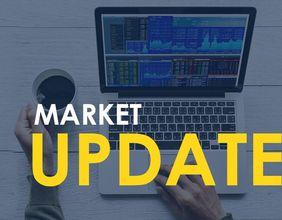Summary
- The AIM market replaced the Unlisted Securities Market after being set up in 1995.
- In 2020, companies listed on AIM raised more than £5billion from shareholders.
- Boohoo, ASOS, and Fever-Tree are some of the prominent listed companies on the index.
Set up in 1995 and known as the junior market in the UK, the AIM market replaced the Unlisted Securities Market. This market has a diverse range of companies from online retail, healthcare, and renewables.
In 2020, companies listed on AIM raised more than £5 billion from shareholders. More than 20 of the 865 companies listed now have a valuation of over £1billion. The online fashion and cosmetic retailer ASOS Plc (LON:ASC) is a £4.9 billion business now, while the online fashion retailer Boohoo Plc (LON:BOO) has a market capitalisation of £3,860.71 million. Boohoo recently acquired Debenhams while ASOS bought several Arcadia brands.
Should I invest in AIM market?
Other known names in the index include the drink mixer Fever-Tree Plc (LON:FEVR) and video game developer Team 17 Group Plc (LON:TM17). The share price of Fever-Tree has increased by 75 per cent compared to last year, and that of Team 17 has gained 80 per cent.
Due to strong performances by its constituents, FTSE Aim All-Share Index gained 20 per cent last year, closely following the blue-chip FTSE 100 index, which is 27 per cent higher than last year.
The index has less strict listing norms compared to other LSE markets, making it comparatively more speculative than bigger exchanges. The responsibility of keeping to the overall guidelines is on the nomads or nominee advisors.
Valuations of this index are supported by big tax breaks, and inheritance tax is not charged on several shares if they are in possession for over two years.
The market has proved its worth as a gap market that rewards investors with a risk appetite who have helped small companies to grow.
The dos and don’ts of investing in AIM
AIM is much less regulated than other bigger markets. Just like it rewards risk, it is also exposed to frauds. The best way to explore this market is by doing enough research in an individual capacity. Good research helps investors to have an edge, despite the risks the market poses. Prices here are set by retail investors, as very few institutions would consider companies having a valuation of less than £100 million.
Several private investors have managed to gain by investing in solid companies that the market has ignored. It’s imperative to carefully read annual reports not just of one year but that of last few years.
It is also important to read the cash flow of any company listed on this index. More than profit, cash flow statements need to be carefully studied to form a fair idea of how cash is moving through the company’s operations.
Another concern regarding this market is that companies with less than £100 million market capitalisation are not able to achieve substantial scale. Several companies that are listed on AIM belong to the oil and gas sector or are smaller mining companies who abandon unfeasible projects, opt for refinancing to explore other options or change their names. These types of companies should be avoided.





